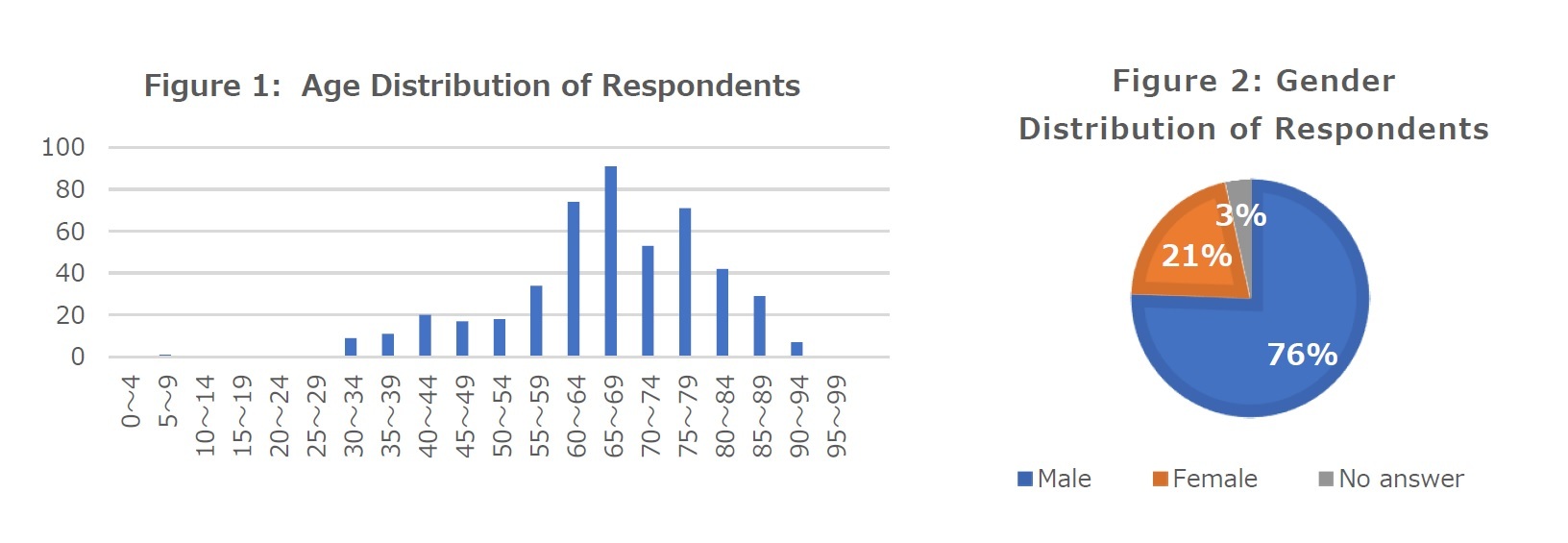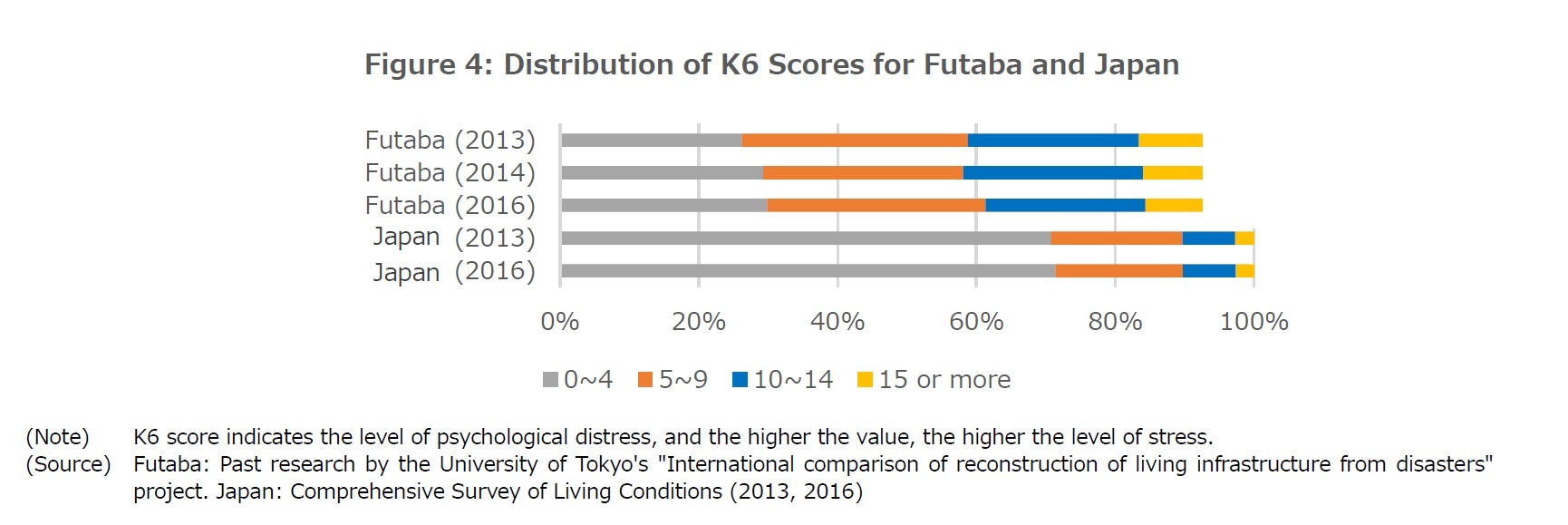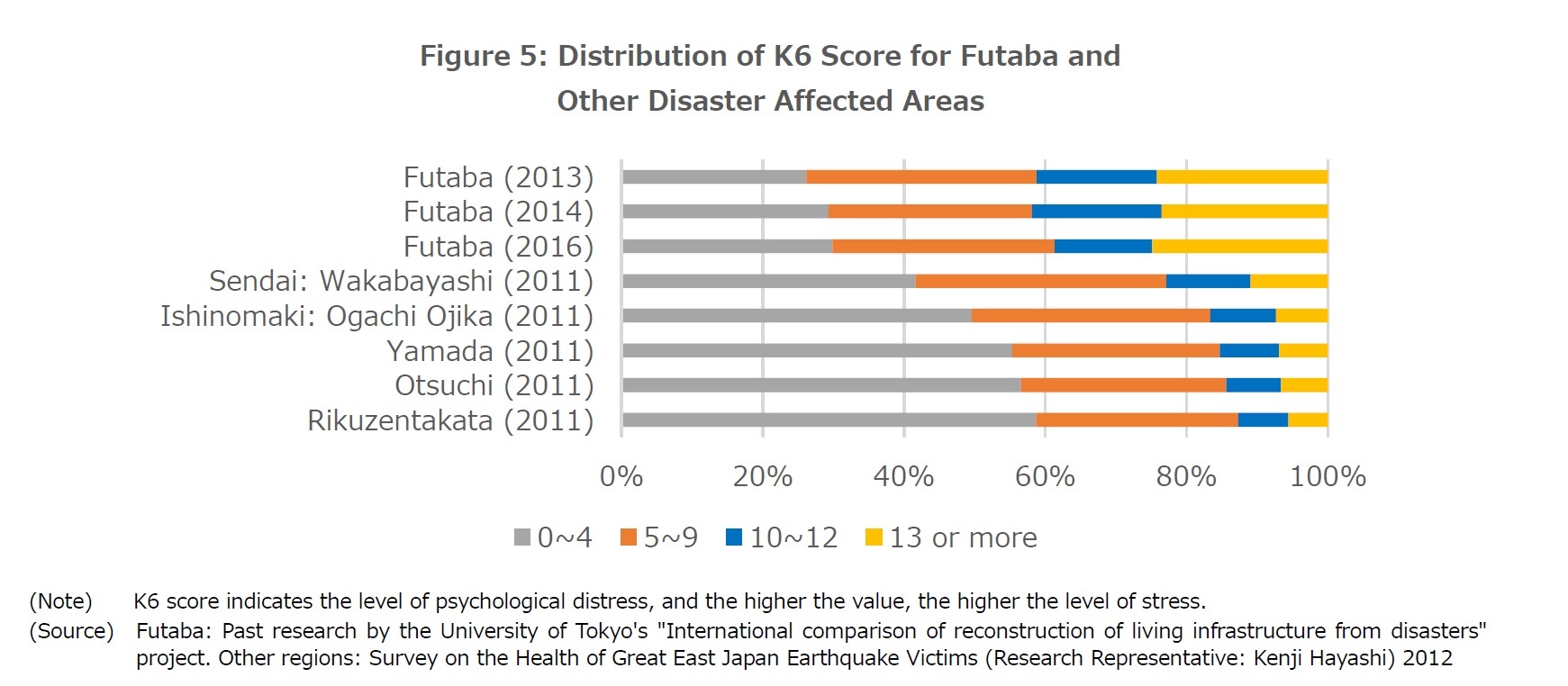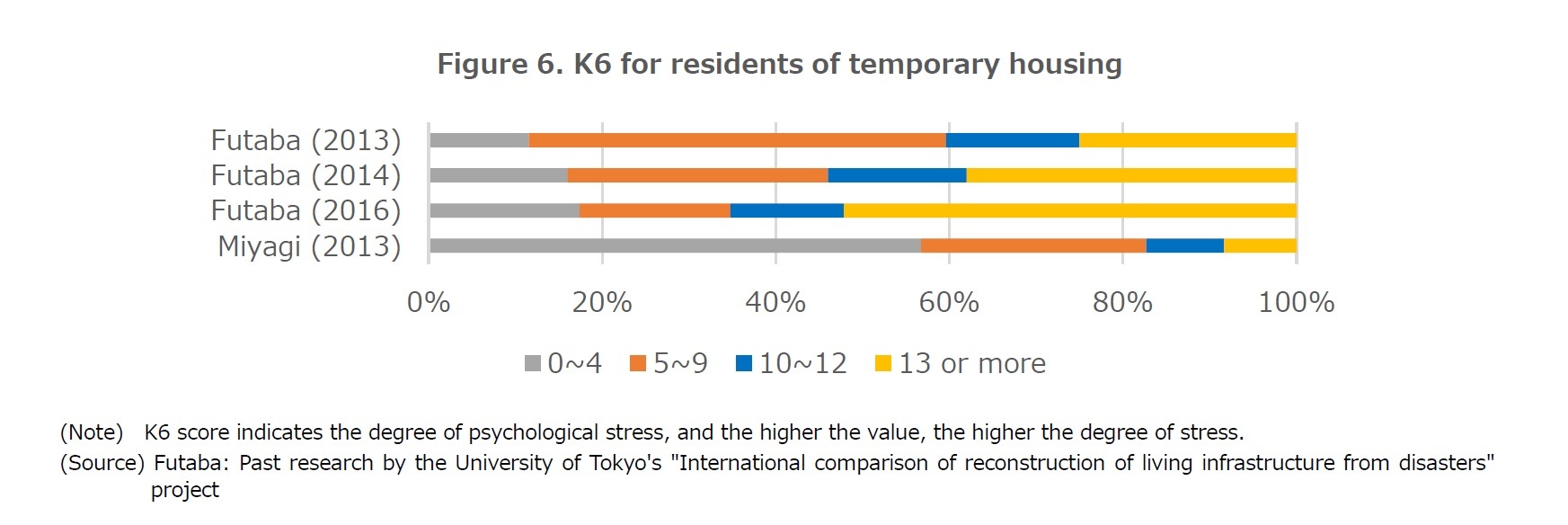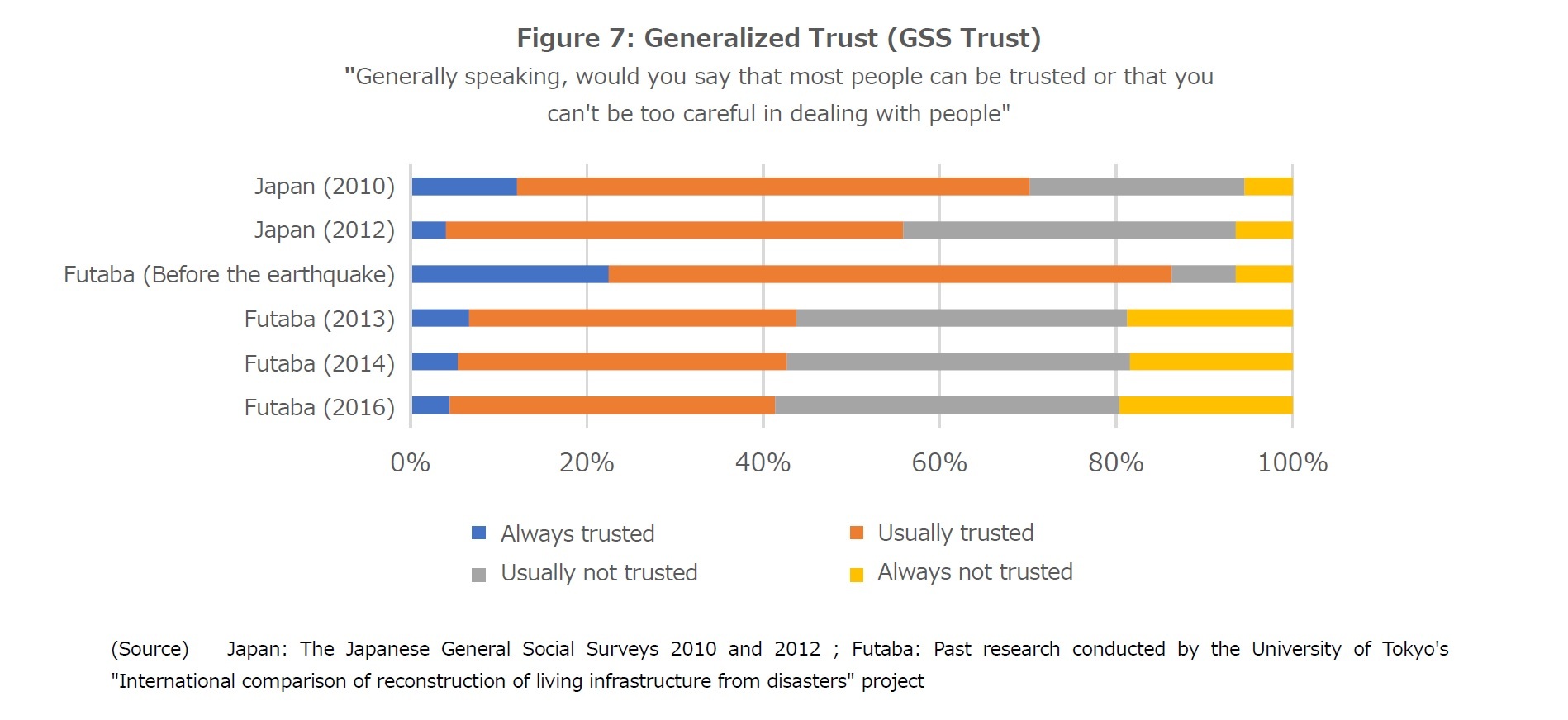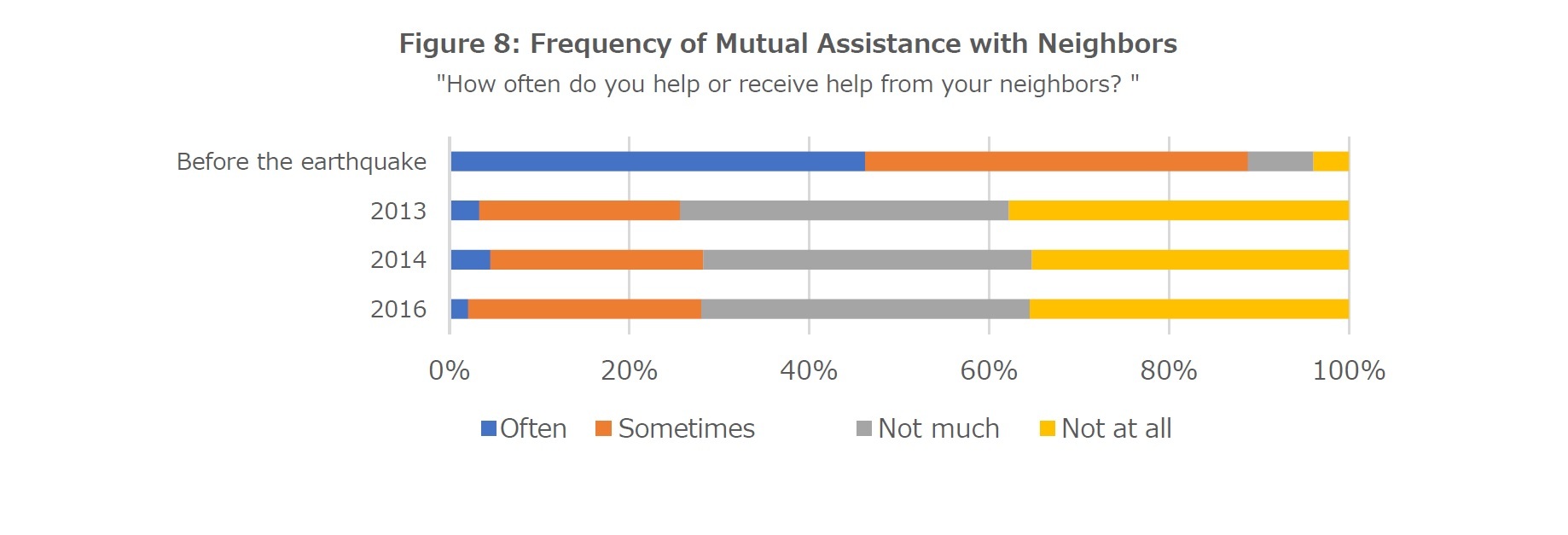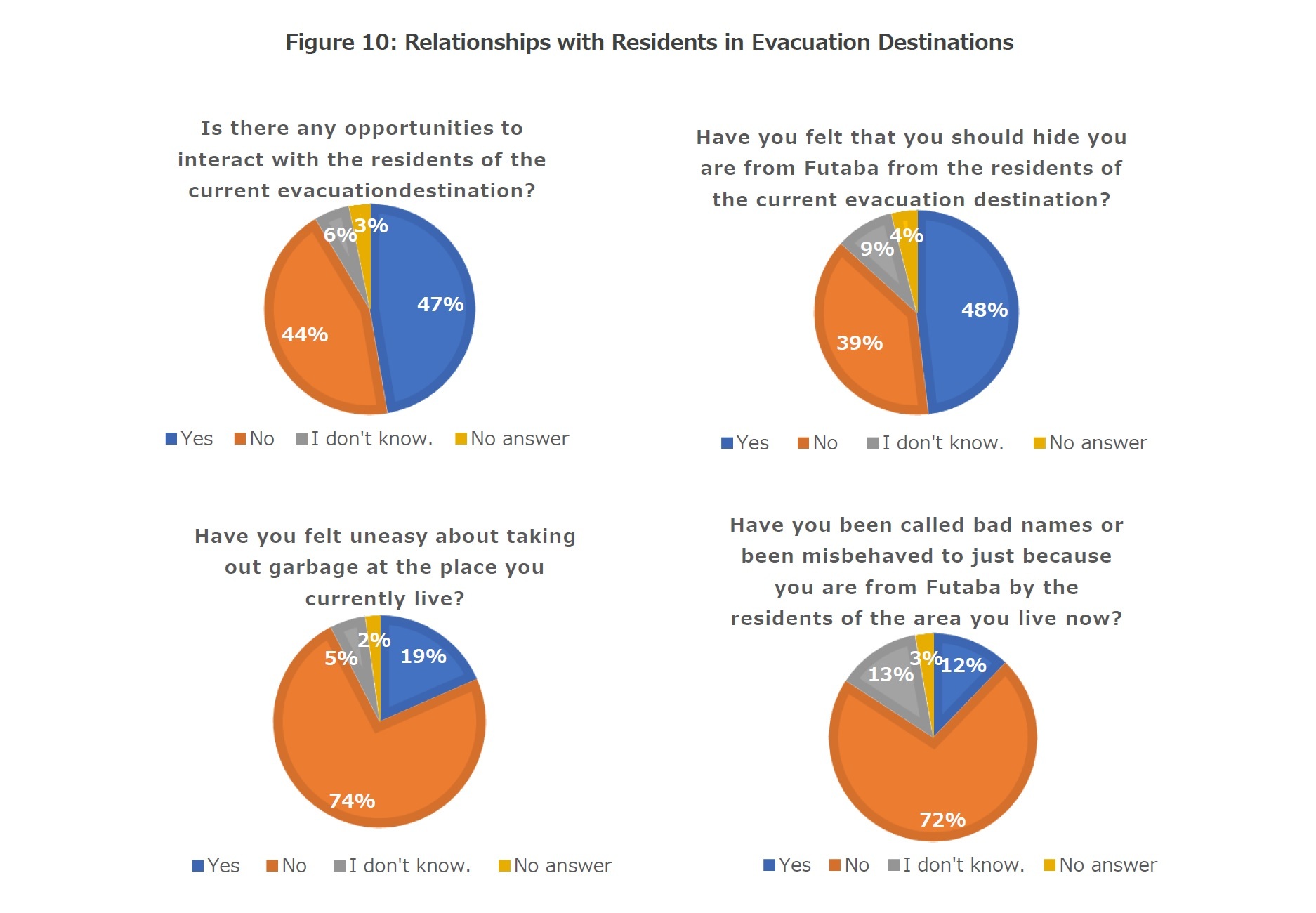- NLI Research Institute >
- Life >
- Damage, Living Environment, and Reconstruction Under the Great East Japan Earthquake-The 3th Survey of Nuclear Disaster Evacuees from Futaba, Fukushima, Summary of Results 2016
Damage, Living Environment, and Reconstruction Under the Great East Japan Earthquake-The 3th Survey of Nuclear Disaster Evacuees from Futaba, Fukushima, Summary of Results 2016
Insurance Research Department Keiko Iwasaki
Font size
- S
- M
- L
1――Basic Information
The survey targeted heads of households and Figures 1 and 2 show the distribution of age and gender of the respondents. As we can see from these figures, compared to the age and gender distribution reported in the national census, the age distribution of the respondents is left-skewed, with the majority of respondents in their 60s. The gender distribution shows that the majority of respondents are male. In addition, since the survey was conducted after the tremendous disaster, it is possible that the distributions of the respondents' characteristics are significantly different from those of general questionnaire surveys. Therefore, it should be noted that the results of this survey do not necessarily indicate the general trend of Futaba residents.
1 This research was supported by the following research grants.
Grant-in-Aid for Scientific Research (15 J09313, 26220502, LZ003), Research Grants of the Japan Center for Economic Research.
This study is approved by the Ethics Committee of the University of Tokyo (19 -73).
2――Health Condition
In addition, comparing the K6 score of residents of temporary shelters from Futaba and Miyagi, K6 score of Futaba residents who live in temporary shelters tend to have a higher K6 score (see Figure 6). Furthermore, the K6 score of Futaba residents who live in temporary shelters have been increasing year by year. There are two possible reasons for this. First, the prolonged stay in temporary shelters could have been putting stress on the residents. Second, it could have been difficult for those under high stress to move out from the temporary shelters to other residences. In any case, this suggests the importance of continuous mental health support for those who live in temporary shelters for a long time.
3――Change in Social Capital
There are several indicators that are commonly used to measure social capital, but we focused on three items which are the level of "generalized trust", "frequency of mutual assistance with neighbors" and "trust in neighbors". As shown in Figure 7 to 9, all of these three indicators show that social capital has weakened because of the disaster and recovery trends cannot be observed so far. Moreover, “generalized trust” shows a gradual declining trend can be observed during the three years period. These trends indicate that it will take a very long time for social capital to recover, and we believe it is important to continue to monitor these changes over the long term.
4――Building Relationships with Residents at Evacuation Destinations
5――Summary of Findings from the Three Rounds of Surveys
(2) The disaster has weakened the social capital of Futaba residents, and recovery may take a very long time.
(3) Keeping in touch with friends from pre-disaster times as well as participating in hobbies and volunteer activities after the disaster may help people maintain good mental health.
(4) As to changes in income, health status, and living space caused by the disaster, we find that the greater the extent of decrease or deterioration is, the greater the degree of decline in individual well-being tends to be.
(5) The receptive attitudes of residents in the evacuation destinations and successful relationship buildings between the evacuees and residents in evacuation destinations can help to achieve mental health recovery of the evacuees.
These results have been presented at international and domestic academic conferences. In addition, these results have been published in international academic journals. We intend to continue our analysis and contribute to the improvement of disaster preparation/rehabilitation policies.
Our survey results are based on aggregates and analyses of responses from approximately 17% of the households of Futaba and do not represent all Futaba residents. Since the survey was conducted after a major disaster, the characteristics of respondents may be very different from general surveys and there is a possibility of an overestimation in our results due to the deterioration of physical and mental health conditions. Therefore, special caution is required in interpreting the results, and any definitive judgments based solely on these findings should be avoided.

03-3512-1882
レポート紹介
-
研究領域
-
経済
-
金融・為替
-
資産運用・資産形成
-
年金
-
社会保障制度
-
保険
-
不動産
-
経営・ビジネス
-
暮らし
-
ジェロントロジー(高齢社会総合研究)
-
医療・介護・健康・ヘルスケア
-
政策提言
-
-
注目テーマ・キーワード
-
統計・指標・重要イベント
-
媒体
- アクセスランキング


















